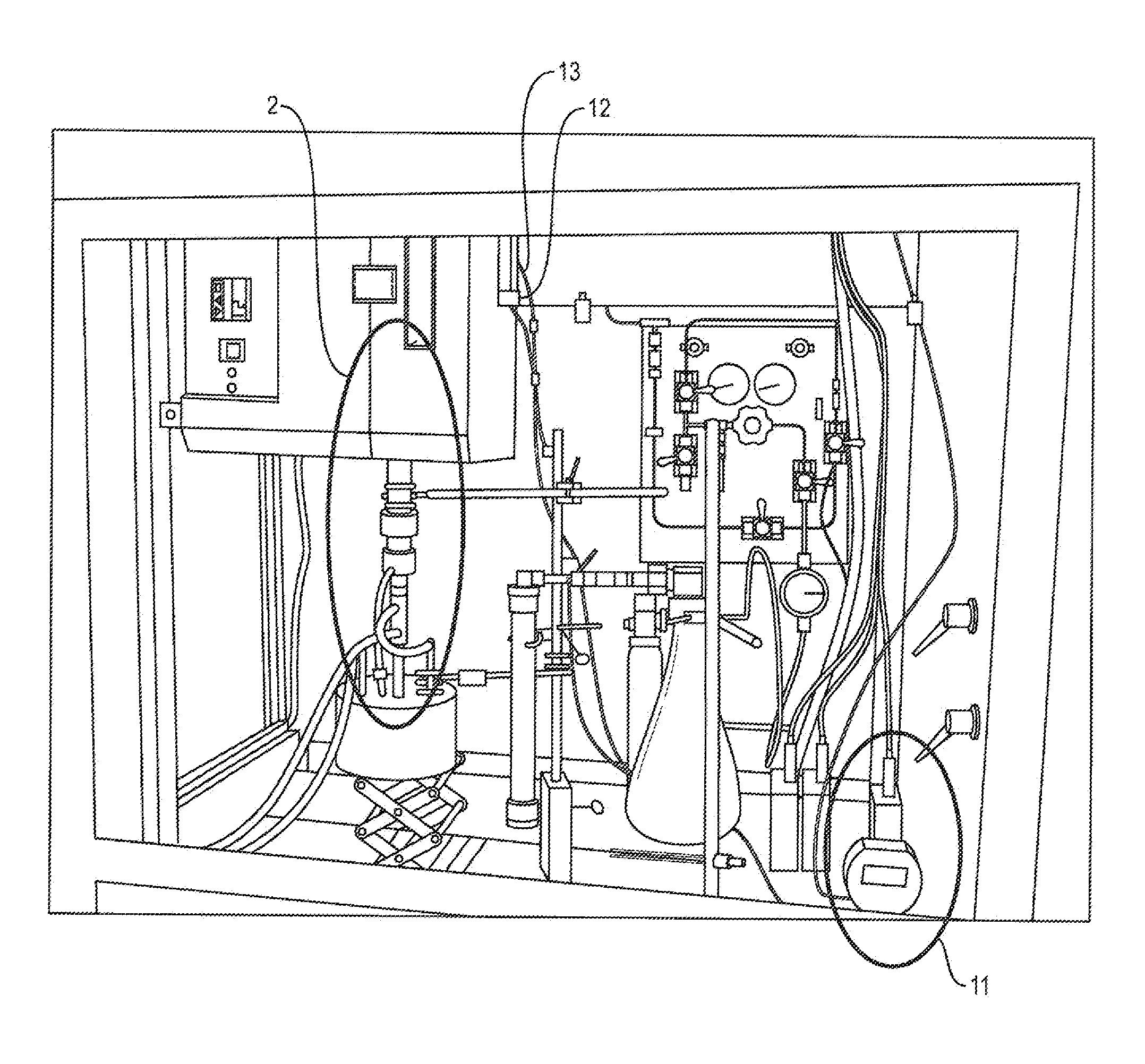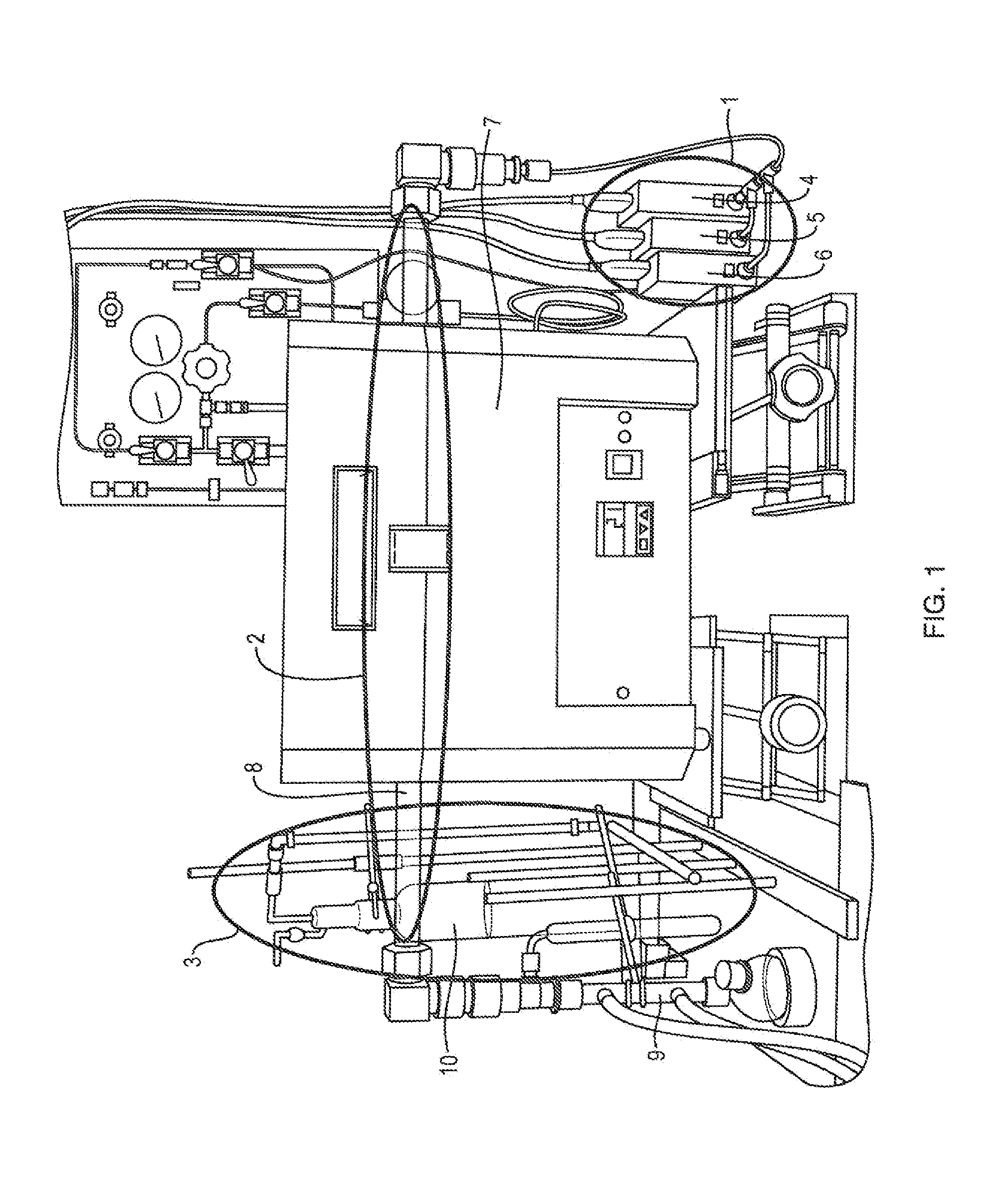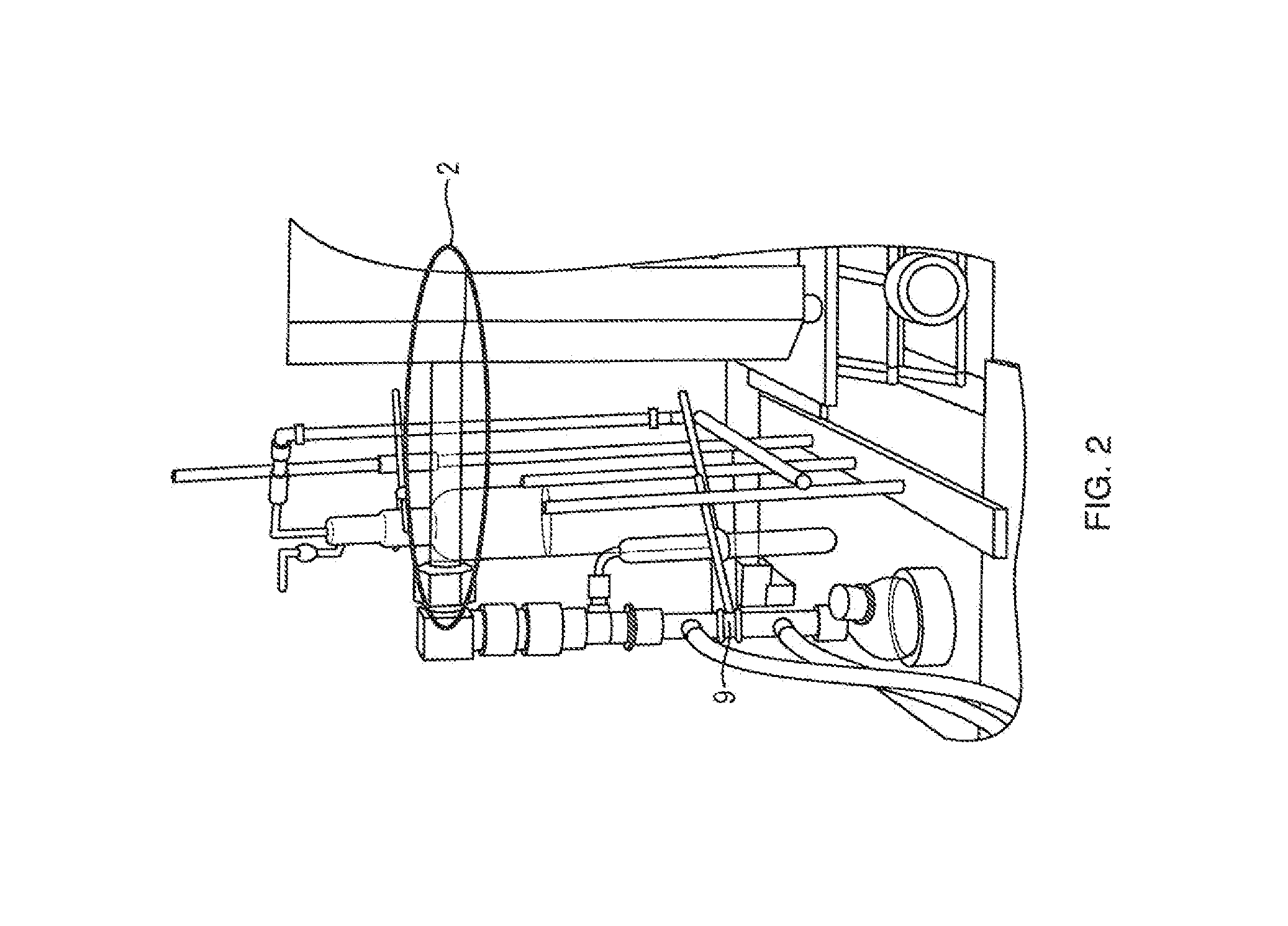Reducing cost of partial metal removal from carbide-derived carbon via automated batch chlorine process
- Summary
- Abstract
- Description
- Claims
- Application Information
AI Technical Summary
Benefits of technology
Problems solved by technology
Method used
Image
Examples
example 1
[0029]In this working example, the relief valve is set to 2 psi. The pressure for the loop is set at 1.5 psi by the control software. As the reaction proceeds, the silicon and chlorine react forming silicon tetrachloride. The silicon tetrachloride has a boiling point of 60 degrees Celsius, it will condense out of the gas stream in the Liebig type condenser that is cooled to 5 degrees Celsius. This will lower the pressure in the loop. The pressure transducer will report a loop pressure less than 1.5 psi to the control software. The control software will then command the mass flow controller to add reaction gas to the loop until the pressure is greater than or equal to 1.5 psi. Gas will not exit the loop unless the pressure exceeds 2 psi. The diaphragm pump will constantly circulate the gases in the loop helping to purge the reaction zone of byproducts that may slow the reaction, This embodiment allows as much gas as is required by the reaction to be feed into the loop. For example, i...
example 2
[0030]Referring to FIGS. 5 and 6 gas sorption and thermo gravimetric analysis of one embodiment processed for 9 or more hours had a surface area range of 900-1100 sq.m / g and a weight loss 82-92%. In this embodiment, 1 g samples of silicon carbide were processed at 1000 degrees Celsius and a 10 sccm flow of chlorine. Process time was varied from 1 hour to 12 hours. All samples were further processed in a 600 degree hydrogen atmosphere for 2 hours. Selected samples were evaluated by the “Chem Scout” program for their gas adsorption or desorption behavior. General adsorption or desorption behavior was reported to be very good (e.g., a 3× improvement with methyl carbamate and 5× improvement with nitrophenol).
[0031]One embodiment presents modifications to the prior art process by allowing chlorine to be added as needed by the reaction. In this embodiment, the software is allowed to monitor and control chlorine flow resulting in a reduction in chlorine usage, from 5.4 liters per gram of s...
PUM
 Login to View More
Login to View More Abstract
Description
Claims
Application Information
 Login to View More
Login to View More - R&D
- Intellectual Property
- Life Sciences
- Materials
- Tech Scout
- Unparalleled Data Quality
- Higher Quality Content
- 60% Fewer Hallucinations
Browse by: Latest US Patents, China's latest patents, Technical Efficacy Thesaurus, Application Domain, Technology Topic, Popular Technical Reports.
© 2025 PatSnap. All rights reserved.Legal|Privacy policy|Modern Slavery Act Transparency Statement|Sitemap|About US| Contact US: help@patsnap.com



